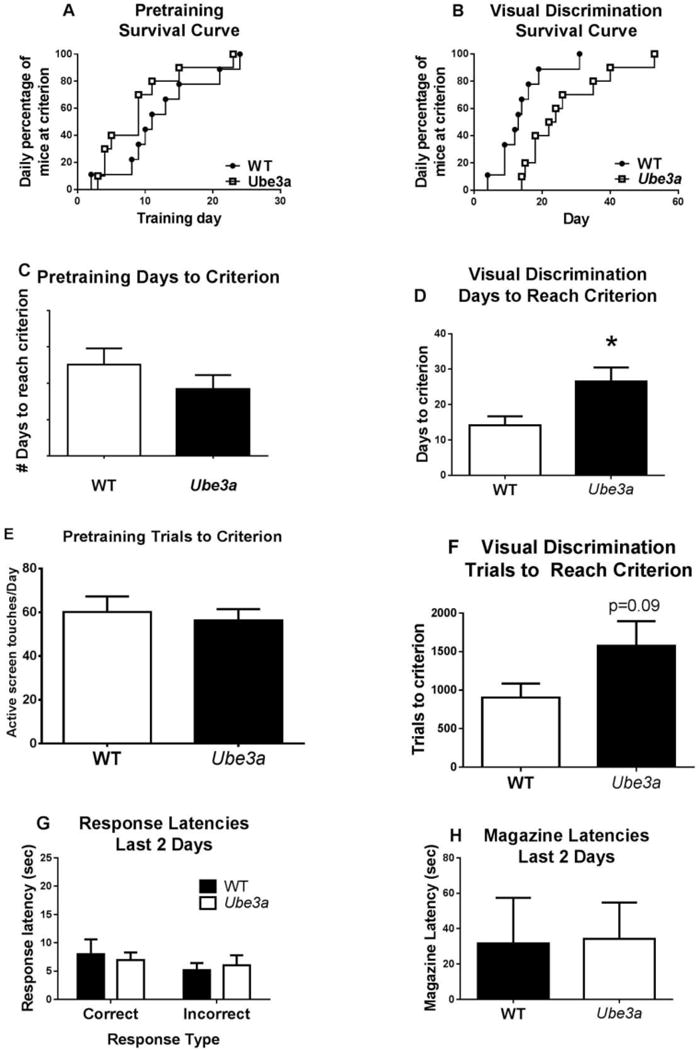Figure 1.

The Ube3a mouse model of Angelman syndrome, in which the heterozygous mutation is maternally derived, displayed deficits on acquisition of a pairwise 2-choice visual discrimination operant touchscreen task. A) Pretraining survival curve. Number of days to reach criterion indicated no gross differences in the rate of procedural learning. B) Visual discrimination survival curve indicated that Ube3a mutant mice required more days of training to reach the criterion of ≥ 80% correct, in learning the discrimination between the X image and the equal sign = image on the touchscreen, as compared to wildtype littermates (WT). C) WT and Ube3a required similar numbers of days to reach criterion on the pretraining phase, indicating similar procedural abilities. D) Ube3a required more days to reach criterion than WT on the visual discrimination task, indicating a slower learning curve. E) During pretraining, the number of trials to reach criterion (active screen touches per day, representing trials completed), was similar between WT and Ube3a. F) During visual discrimination learning, the number of trials to reach criterion (active screen touches) showed a trend for slower acquisition in Ube3a than WT. G) Response latencies during the last two training days indicated that physical movements were similar between genotypes, since a similar amount of time elapsed between image onset and selection of image choice. H) Latencies to reach the reinforcement magazine during the last two training days indicated that motivation for food reward was similar between genotypes, and corroborated generally normal motor function. Results indicate that Ube3a mice can learn the procedural components of an operant discrimination task, but episodic learning of specific image pairs was acquired more slowly by Ube3a than by WT. N=9 WT, 10 Ube3a, *p < .05.
